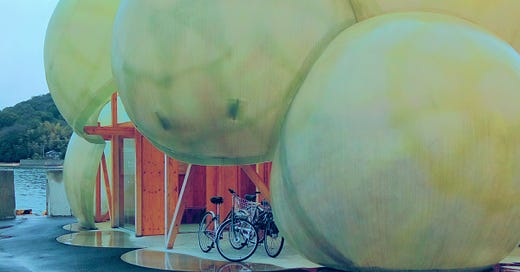Building a future business vision through continuous improvement
A culture of experimentation can help companies trace the trajectory of tomorrow´s narratives in fuzzy times.
“What is misunderstood is this idea that the future that we’re trying to develop with a vision is a photograph. It’s actually an impressionist painting” says Mark Johnson, co-founder of the innovation consulting firm Innosight.
The quote rings ever so relevant in the current state of global uncertainty.
Today, to outline future business narratives is to learn to negotiate with a line of the horizon that is fuzzier than ever before. Far from being clear-cut roadmaps, strategic future visions needs to accommodate for uncertainty and for continuous adjustment and adaptation to a fast-changing context.
The needs for organisational flexibility, capability and adaptability, largely anticipated at the societal level by the work of Alvin Toffler (1970), are also reframing the way businesses approach and think of innovation.
Along with co-creation, experimentation (also referred to as exploration) has strongly emerged as a basis for rethinking innovation practices. A growing perspective in innovation management argues that high speed incrementalism, rather than disruption, is the real foundation of progress (H Thomke).
This principle counters the belief that radical change is the only way for companies to innovate, and suggests instead the idea of a “complementarity” between radical breakthroughs, which usually entail creating entirely new markets or significantly transforming existing ones, and the cumulative effect of frequent improvements to existing products and services. For an incremental approach to succeed and generate big returns, numerous experiments need to be conducted quickly and frequently.
An experimentative mindset makes a lot of sense when getting to grips with new technology adoption.
A major obstacle for companies in forming a vision that integrates AI at the heart of their business, for example, is the absence of a clear and defined understanding of what that vision entail - the lack of a clear-cut photograph of the future.
AI comes with some fuzziness of its own(PWC), as I explained in one presentation I gave earlier this year: there are numerous soft benefits that are harder to quantify in the short term. Things like, employee engagement , customer and employee experience, skills retention, technological agility and digital transformation, Enhanced/data-driven decision-making, valuation of the company as a whole, complicate ROI calculations.
Experimenting ahead of adoption could help smooth out a significant part of that uncertainty.
It can help measure AI generated value and quantitatively gauge its bottom line.
Business focus needs changing from the technology (enabler) to the future vision (end goal)
For instance, we can estimate productivity gains from an AI solution by knowing the cost per hour of employees, the number of hours they spend on a process and the amount of hours it takes for that process to be carried out by the same people with the help of AI.
Ultimately , lots of that gain will ultimately depend on how a company is able to adjust its business model and capture value it creates through any strategic initiative, such as AI adoption.
Business focus needs changing from the technology (enabler) to the future vision (end goal) and the question we should seek to address is: what does the business model of the future look like, and how can we use AI as a fundamental pillar to drive this transformation? (Fellner, 2024)
It´s important to dispel the idea that the answer to that question needs to look like a defined ontology. Most likely, it´ll look like a blurry painting in the making and that´s a good thing, in times of chronic upheaval and flux.
By committing to a culture of experimentation, companies allow themselves to rethink the vision as a frequent practice and evolve it as they learn in the market with initiatives that get tested (Johnson, 2023), by identifying changing
needs for adjustment and how different scenarios play out.


